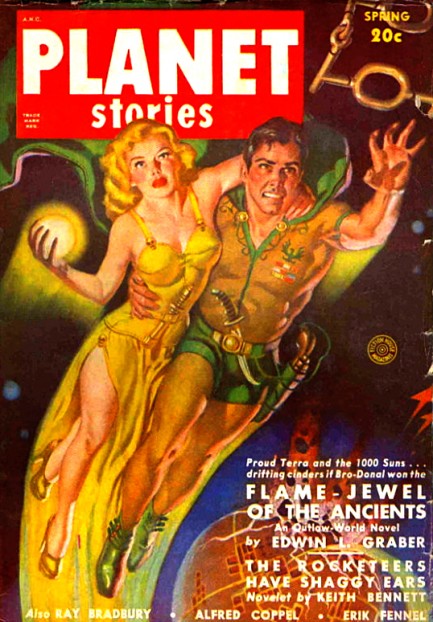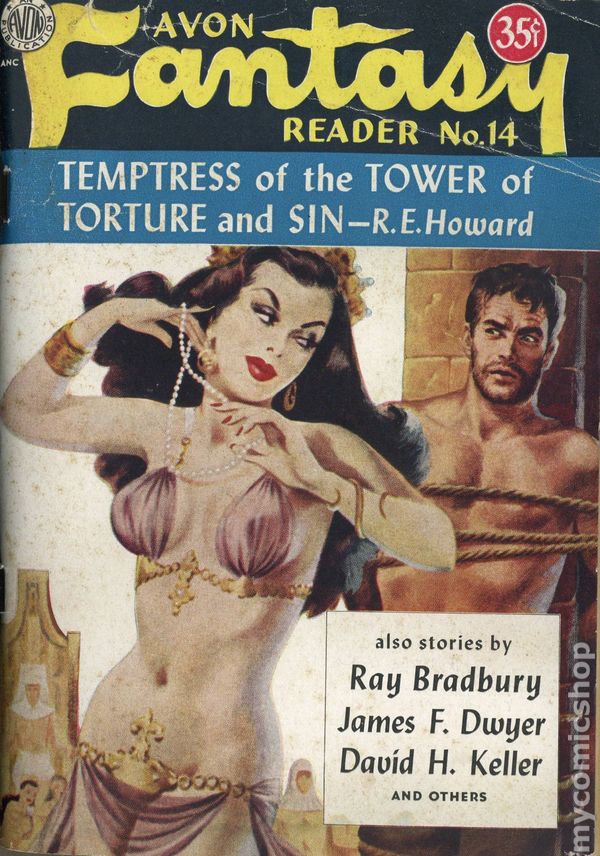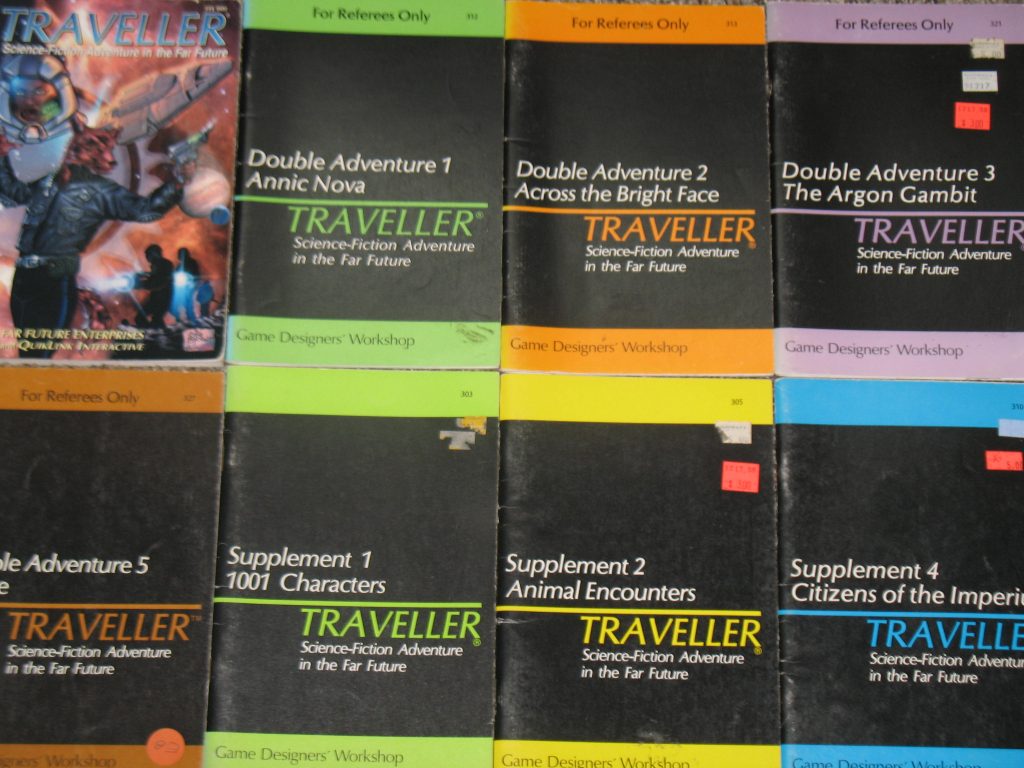SENSOR SWEEP: Indefatigable Passion, Infinite Wells, Consensual Storytelling, and Literary Respectability
Monday , 8, May 2017 Sensor Sweep 2 Comments Roleplaying Games (SuperversiveSF) The Superversive in Tabletop RPGs: King Arthur’s Pendragon — “The reason I mark this out as Superversive is that everything about the game emphasizes the fundamental elements upon which Western Civilization rest, especially if you choose to do the default and play a Christian Knight. The game, as a primary mark of distinction, has mechanics by which your character (assumed to be a Knight, and few other options are ever offered, depending upon edition) will act upon the personality traits that mark him as a faithful Christian, a heroic Knight, and so on (or not). Adherence to the norms of the era are rewarded, and the modernist approach will just end badly.”
Roleplaying Games (SuperversiveSF) The Superversive in Tabletop RPGs: King Arthur’s Pendragon — “The reason I mark this out as Superversive is that everything about the game emphasizes the fundamental elements upon which Western Civilization rest, especially if you choose to do the default and play a Christian Knight. The game, as a primary mark of distinction, has mechanics by which your character (assumed to be a Knight, and few other options are ever offered, depending upon edition) will act upon the personality traits that mark him as a faithful Christian, a heroic Knight, and so on (or not). Adherence to the norms of the era are rewarded, and the modernist approach will just end badly.”
Pulp Revolution (Into the Night) Gaining a second education, Part three — “I’ve written over a million words in the last three years, and some of it has been good but most, well not up to the standard. Something was missing and I found out what it was. The writers of the Pulp Era. I need to say a huge thank you to Jeffro Johnson putting the idea in my head to read Appendix N.The same goes out to Jasyn Jones for his indefatigable passion for all things pulp.These stories have meaning, real heart and unadulterated heroism. I have three months before my Lil Buddy begins schools and I can once again resume writing full time. By then I hope to have gotten a good start on my second education, I’m learning more now than I ever did at school.”
Star Wars (Jon Del Arroz) Heir to the Empire by Timothy Zahn — “But the new characters don’t stop there for interest. Karrde is a crime lord type, and the twist on this end of the galaxy is that he’s got a code of honor. His organization is where we meet Mara Jade, who’s been the dream of fanboys for a generation. This really is the seminal star wars novel, with a cast of characters about as interesting and memorable as the original films themselves, maybe moreso. He took the world, and he truly put a good twist on it, a nice backdrop for the future.”
Tunnels & Trolls (Semper Initiativus Unam) Hacking Through the Tunnels — “T&T is, above all, a very open game. It embraces a strong referee with a creative vision, although ironically the game is very well known for solo modules. (You’ll want to start with Buffalo Castle.) If nothing else, giving a run through a few solos will change how you think about old school gaming, and it’s one of the few experiences that any RPG gamer can have ‘out of the box’ even in 2017.”
Tunnels & Trolls (DT&T) Classic 5th Edition T&T now on Drive-Thru Rpg — “Partial thanks is due to a long series of articles about 1st edition T&T and how it compares to to the later T&T editions and D&D. Here is a link to the first article in that series, which is a great read if you really want to discover the origins and the innovations that our very own Ken St Andre created.”
Car Wars (Walker’s Retreat) My Life as a Gamer: Remembering “Autoduel Quarterly” — “What made it great for a gamer kid coming into adolescence was that this magazine (like Dragon) wasn’t just new gear and official car designs to use in your home games. They had tournament reports (always at conventions I couldn’t attend no matter how much I wanted to), other real-world news, game-world events to use as prompts for your own use, game variants (inevitably the trial run; anything sufficiently popular got build out into a full supplement), and the letters column (always the best part).”
Short Fiction (Misha Burnett) Short Fiction, or “What Needs To Happen Next” — “Novels are great, and I love reading them and writing them. However, novels require a substantial investment from both the author and the audience. Certainly innovation and experimentation are possible in novels, but the nature of the form encourages caution. You can take risks in a novel, as a writer, but they are, well riskier. More is at stake. Short stories, by their nature, allow for more freedom.”
Pulp Revolution (Seagull Rising) THIS is Pulp — “After slogging through a few less than stellar attempts at pulp and a pair of Hugo worthy novelettes, it feels fantastic to soak up some Schuyler Hernstrom. It isn’t just palette cleansing, it’s soul cleansing. It’s writing so rich that I find myself stopping just to prolong the pleasure.”
Pulp Revolution (RMWC Reviews) Harry Potter and the READ ANOTHER BOOK — “There’s a reason why Harry Potter similes and metaphors are met with ‘READ ANOTHER BOOK.’ There’s a near-infinite well of speculative fiction to draw from out there, if you know where to look. There’s no need to settle for keeping up with what the popular kids are telling you to read. The cross-pollination of ideas in the Pulp Revolution and Superversive movement is going to lead to an avalanche of creativity within the next six months. You can bet on that.”
 Dumbing Us Down (Into the Night) Gaining a second education, Part one. — “Education isn’t set up to inspire a love of reading. It has no desire to push you towards books that will expand your mental horizons. Individual teachers might, if they’re dedicated and like you, but the system isn’t designed to. It’s easy for a love of books to be lost, for a single teacher to take that away forever. Again, I’ve seen that happen which is why parents stepping in and accepting some responsibility for their kids’ education is so important. Feed your kids with books, read them together, inspire that love because I’m telling you now schools won’t.”
Dumbing Us Down (Into the Night) Gaining a second education, Part one. — “Education isn’t set up to inspire a love of reading. It has no desire to push you towards books that will expand your mental horizons. Individual teachers might, if they’re dedicated and like you, but the system isn’t designed to. It’s easy for a love of books to be lost, for a single teacher to take that away forever. Again, I’ve seen that happen which is why parents stepping in and accepting some responsibility for their kids’ education is so important. Feed your kids with books, read them together, inspire that love because I’m telling you now schools won’t.”
Pulp Revolution (Walker’s Retreat) Bring the Diaspora Home — “Here at the Retreat, by many over at the Castalia House blog, and at other blogs devoted to the history of the Pulps we’ve looked into where that spirit went after the proto-SJWs destroyed them. We’ve been looking for– and finding– the destinations for the Pulp Diaspora. The spirit went to comic books (as we see above), into feature films, into television, and later into tabletop and videogames- as well as overseas into the popular culture of other nations (notably, France and Japan), often to fantastic success. What this means is simple. We’re not trying to resurrect the dead. We’re trying to bring the diaspora back to its native land, and thereby dislodge the dullards that dominate the rightful home of the Pulps.”
Insider Watch (Injustice Gamer) GenCon 2017 Industry Insider Program — “I know that Pathfinder is the second largest RPG, but this looks more like a Paizo insider than an industry insider track. Why not have more that are in the boardgame/wargame side? Where’s the OSR, they’ve got some good stuff. There’s more Paizo connections than WotC connections. This is disturbing in the lack of diversity of game philosophy.”
Roleplaying Games (Comics Madness) With more power … — “Designing a role-playing game inspired by serial fiction in another medium faces a serious problem: The curse of consensual storytelling, which is to say, blither until someone takes over as boss-author. The equally toxic counter-curse of over-scripted fill-in-the-blank, reducing the participants to minor thespian support of what’s already been created. The solution is not to find a “balance,” as both are qualitatively bad, but to do something else entirely.”
Books (Vintage Novels) The Way We Live Now by Anthony Trollope — “The Way We Live Now is a tale of hypocrisy on a grand scale; its aim ultimately to wake its readers’ consciences. The fact that it was disliked in its day and is now regarded as Trollope’s magnum opus is perhaps a sad sign that hypocrisy is as lively as ever it was: we are always more willing to put on sackcloth and ashes for the sins of our forbears than for the sins of our own day.”
Appendix N (Hooc Ott) Derpy Derp…lulz….wait….wut? — “While the influence of the fantasies of Lord Dunsany on Lovecraft’s Dream Cycle is often mentioned, Robert M. Price argues that a more direct model for The Dream-Quest is provided by the six Mars (“Barsoom”) novels of Edgar Rice Burroughs that had been published by 1927.”
Hard SF Buds (Just the Caffeine Talking) Retro-Review: Famous Science-Fiction Stories (Part 1) — “And in 1946 the doors of the Temple of Literature were opened: Modern Library published an anthology of short fiction and a couple of nonfiction articles called Famous Science Fiction Stories: Adventures in Time and Space, edited by Raymond J. Healy and J. Francis McComas. Both editors were established publishing-industry pros at the time, but McComas went on to write several science fiction stories of his own. This is science fiction’s first stab at the big time, at literary respectability. One would expect this to be the greatest all-star anthology ever.”
Pulp Speed (The Pulp Archivist) A Million Words a Year For Ten Straight Years, by Walter Gibson — “I was the writer who received the assignment. The story was to be done under the penname of Maxwell Grant; if satisfactory, three more would be needed since The Shadow was to be a quarterly publication. Since then I have written more than two hundred Shadow novels, totaling better than ten million words. The first issue clicked, and the magazine immediately became a monthly. It jumped to twice a month, within its second year, and still appears at that frequency.”
This is known as “bad luck” (The Frisky Pagan) Isaac Asimov on adventure, pulp, and Shakespeare. — “In 1939, there came a science fiction magazine boom, and new magazines of all kinds suddenly made their appearance on the newsstand. In December 1939, Planet Stories appeared. it was, in some ways, the best of the adventure science fiction magazine of its time. But if there are science fiction magazine booms, there are also science fiction magazine busts; and—all too often—the higher the boom, the deeper the bust. A particularly intense boom came in the early 1950s; and in the particularly intense bust that followed, both Thrilling Wonder Stories and Planet Stories discontinued publication in 1955.”
Appendix N (Black Gate) Trader to the Stars by Poul Anderson — “Van Rijn is a fantastically over-the-top character. He’s big and fat, to the point of being called globular, possessed of mammoth appetites, affecting a buffoonish style of speech littered with malapropisms and splintered syntax, more than a little lecherous, and never above tricking his way to the most profitable outcome in any situation. Once seen or heard he is not easily forgotten.”

Thanks for the link.
It probably did not come through in my “article” but Almuric was a huge enjoyment for me.
It is not the best Robert E Howard work and because it was written in the first person like Edgar Rice Burroughs’ Barsoom books has some hilarious moments. Esau Cairn, the narrator, describing his own iron thews for example. (Don’t know the history of the story but I suspect it was first draft that didn’t get much editing nor any redrafts as it was published after Howard’s death)
Still it is great fun if only because you get to read REH playing in ERBs sandbox (it even has ERB’s tendency for coincidence like when Esau falls from the sky on the back of a winged demon right between two armies he needs to invade “the dark tower”) along with throwing in a whole bunch lovecraftian monsters and having a Conan stand in beat the hell out of them.
If you have just read a few works of Howard and ERB it is a pure joy to read.
I read Heir to the Empire in the early 90s and I remember disliking it because although Zahn did a reasonable job of capturing the Star Wars vibe, the problem is that he specifically captured Return of the Jedi instead of the superior previous movies. So we got Han as a buffoon and Luke and Leia being a couple of bores. I also didn’t quite buy Thrawn for some reason – maybe the whole “analyze an entire culture by staring at paintings” thing didn’t wash with me…? So I was never motivated to finish the rest of the trilogy.